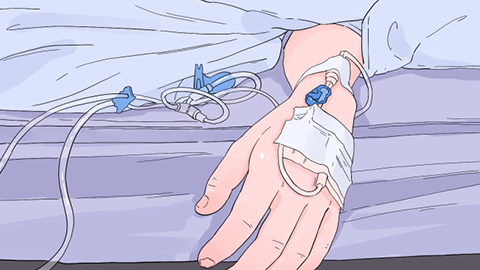Is it dangerous to have blood return during intravenous infusion?
Generally speaking, whether blood reflux during intravenous (IV) infusion is dangerous depends on the specific circumstances and how it is managed afterward. If you experience any discomfort or abnormalities, it is recommended to promptly inform medical staff. The detailed analysis is as follows:

If only a small amount of brief blood reflux occurs during infusion, and the nurse promptly adjusts the height of the IV set and opens the flow regulator so that the blood flows smoothly back into the vein—without clotting or needle dislodgement—this situation is usually not dangerous. Such cases are commonly caused by the IV bag being positioned too high, slow infusion rate, or patient movement causing temporary needle displacement. Brief blood reflux does not typically lead to complications such as thrombosis or infection, and normal infusion can continue after proper adjustment.
However, if there is significant and continuous blood reflux that cannot be resolved by adjusting the IV set, or if it is accompanied by needle dislodgement from the vessel, local swelling and pain, or blood clotting blocking the needle, this may pose risks. Prolonged retention of large amounts of blood in the IV tubing may lead to clot formation; if a clot enters the bloodstream with the fluid, it could cause vascular blockage. Needle dislodgement may also result in local hematoma or tissue irritation due to drug leakage, requiring immediate cessation of infusion and appropriate intervention.
During IV infusion, patients should keep the injection site stable and avoid unnecessary movement that might displace the needle. Do not adjust the IV regulator or remove the needle yourself upon noticing blood reflux; instead, call the nurse immediately. Monitor the injection site for signs of swelling, pain, or fluid leakage, and report any abnormalities promptly. Pay attention to the infusion rate and do not adjust it arbitrarily. If symptoms such as palpitations, dizziness, or chills occur, press the call button immediately for assistance.








